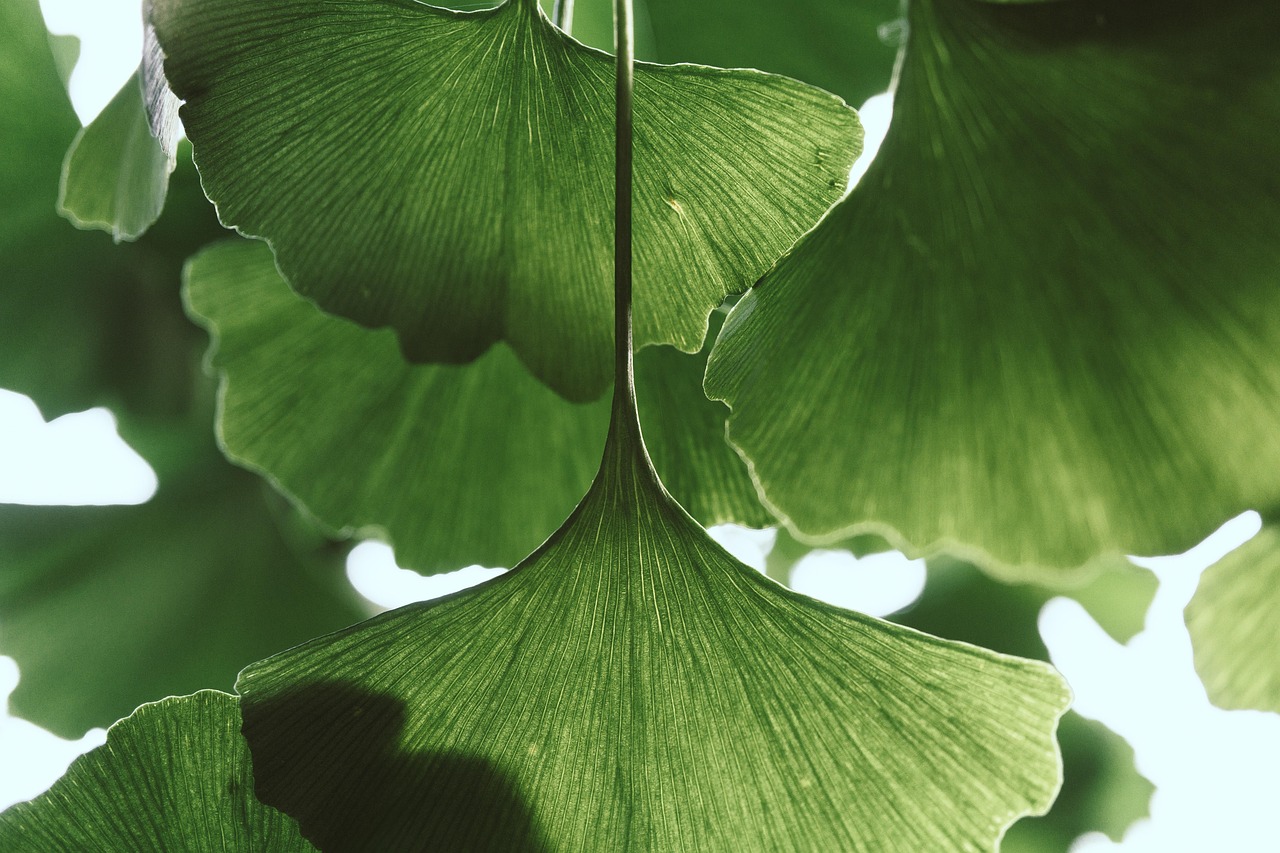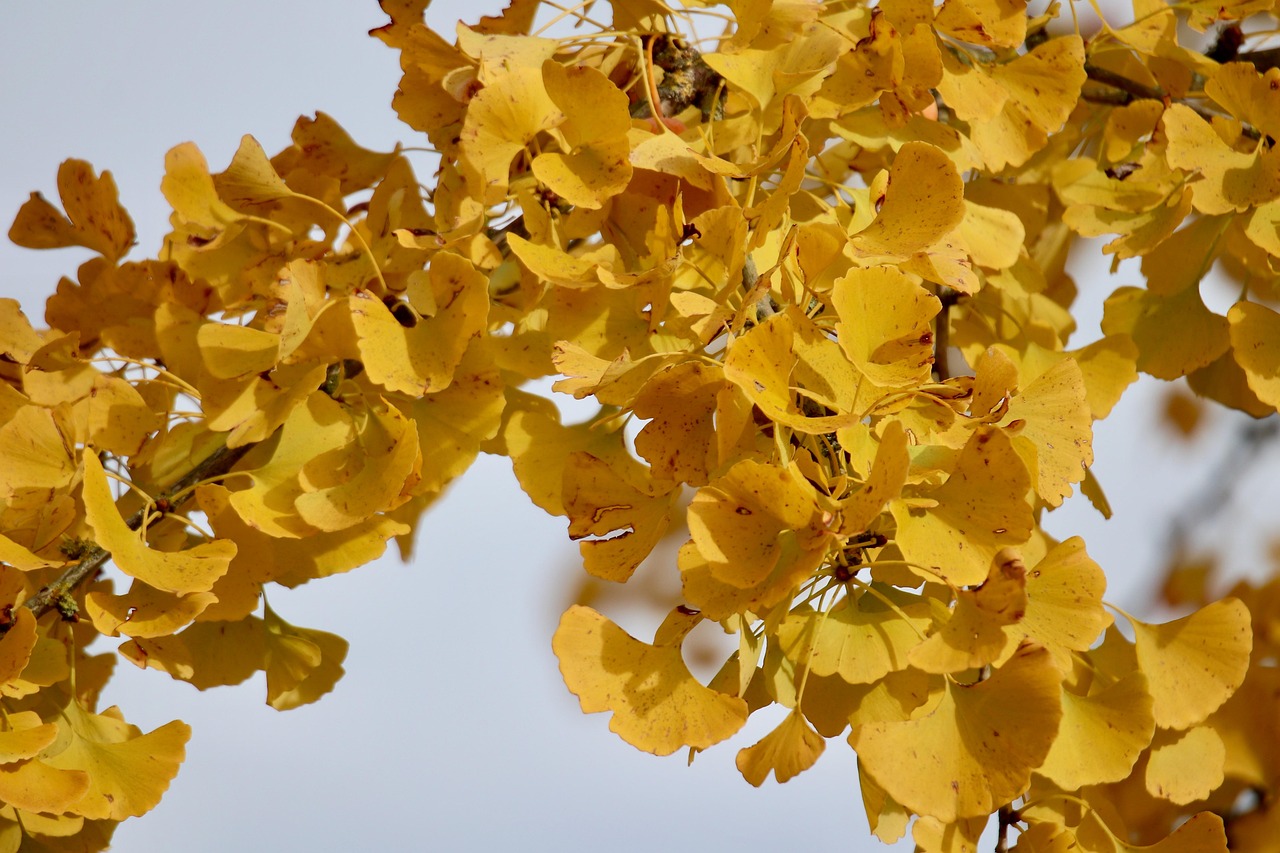Pruning a ginkgo tree properly enhances its ornamental value. Focus on removing dead or weak branches, maintaining its natural shape, and promoting airflow. Timing is key; prune during the dormant season to minimize stress on the tree.
The ginkgo tree, scientifically known as Ginkgo biloba, is one of the oldest living tree species. Known for its unique fan-shaped leaves and striking fall color, it has become a popular choice for ornamental landscaping. Proper pruning can significantly improve the health and appearance of this tree, making it a focal point in any garden or park setting. Understanding how to prune ginkgo trees effectively will help you maintain their beauty and vitality.

Ginkgo trees are resilient and adaptable. They can thrive in various soil types and environmental conditions, but they do require some care to maximize their aesthetic appeal. Pruning is a critical aspect of this care. When done correctly, it encourages healthy growth, enhances the tree’s natural form, and allows for better light penetration and airflow through the canopy.
Understanding Ginkgo Tree Growth
Before diving into pruning techniques, it is essential to understand how ginkgo trees grow. They can reach heights of up to 100 feet and live for over a thousand years. Here are some key growth characteristics of ginkgo trees:
| Characteristic | Description |
|---|---|
| Height | Typically between 50 to 80 feet, with some specimens reaching over 100 feet. |
| Width | The canopy can spread 30 to 40 feet wide. |
| Lifespan | Can live for over a thousand years. |
| Growth Rate | Moderate; grows about 12-24 inches per year. |
Ginkgo trees typically have a pyramidal shape when young, which becomes more rounded as they mature. Their unique branching structure requires careful consideration during pruning. Regular maintenance is crucial to keep the tree looking its best and to prevent potential issues such as overcrowding or disease.

When to Prune Ginkgo Trees
Timing is critical when it comes to pruning ginkgo trees. The best time to prune is during their dormant season, which typically runs from late fall to early spring. During this period, the tree is less stressed, reducing the risk of sap loss and promoting quicker healing. Pruning in warmer months can leave the tree vulnerable to pests and diseases.
In addition to seasonal timing, it is vital to consider the age of the tree when planning your pruning strategy. Young ginkgo trees benefit from formative pruning to establish a strong structure. Mature trees may require more extensive maintenance to remove dead or damaged branches while preserving their natural shape.
Essential Pruning Techniques
Understanding the proper techniques for pruning ginkgo trees will ensure effective results. Here are some essential methods:

- Thinning: This technique involves selectively removing branches to improve air circulation and light penetration within the canopy.
- Heading Back: This method shortens long branches by cutting them back to a lateral branch or bud, promoting bushier growth.
- Cleaning: Remove any dead, damaged, or diseased branches to enhance the overall health of the tree.
- Shaping: Trim branches to maintain the natural shape of the tree while ensuring it remains balanced.
Each of these techniques can be utilized depending on the specific needs of your ginkgo tree. It is crucial to use clean, sharp tools to make precise cuts that will heal quickly. Avoid leaving large wounds on the tree, as they can invite pests and diseases.
Tools Needed for Pruning
Having the right tools can make all the difference in your pruning efforts. Here are some essential tools you should have:
- Pruning Shears: Ideal for cutting small branches and making clean cuts.
- Loppers: Useful for larger branches that are too thick for shears.
- Saw: A small hand saw or pole saw is needed for larger limbs that require more effort to cut through.
- Gloves: Protect your hands while working with tools and branches.
By equipping yourself with the right tools and knowledge about ginkgo tree growth, you will be well-prepared for effective pruning. This care will not only enhance your ginkgo’s aesthetic appeal but also promote its overall health and longevity in your landscape.

Common Mistakes to Avoid When Pruning Ginkgo Trees
While pruning is essential for maintaining the health and beauty of ginkgo trees, there are common mistakes that many gardeners make. Avoiding these pitfalls can lead to better outcomes and a healthier tree.
- Pruning at the Wrong Time: Pruning during the growing season can stress the tree and increase vulnerability to pests. Always wait until the dormant season.
- Over-Pruning: Removing too much foliage can shock the tree. Aim to remove only 10-20% of the canopy in a single year.
- Ignoring Tree Structure: Pruning without considering the tree’s natural shape can lead to an unbalanced appearance. Maintain the ginkgo’s natural form.
- Using Dull Tools: Dull tools can tear branches instead of making clean cuts. Always ensure your tools are sharp.
- Neglecting Safety Precautions: Failing to wear protective gear can lead to injuries. Always use gloves and consider eye protection.
By being aware of these common mistakes, you can ensure that your pruning efforts are both effective and safe. This knowledge empowers you to take better care of your ginkgo tree.
Specific Pruning Techniques for Ginkgo Trees
Pruning ginkgo trees requires specific techniques that cater to their unique growth habits. Below are some detailed methods that can enhance their ornamental value:
Selective Pruning
This technique involves removing specific branches to improve the overall health and shape of the tree. The following steps outline how to perform selective pruning:
- Identify branches that are crossing or rubbing against each other.
- Look for branches that are weak, dead, or diseased.
- Choose branches that detract from the tree’s natural shape and trajectory.
- Make cuts at a 45-degree angle just above a bud or lateral branch.
Selective pruning helps maintain a well-balanced structure while promoting healthy growth.
Crown Raising
Crown raising is a technique used to improve visibility beneath the tree and allow more light to reach the ground. Here’s how to do it:
- Evaluate the lower branches. Identify those that are too low or interfering with pedestrian traffic.
- Remove a few of the lowest branches, cutting them back to the trunk or lateral branches.
- Aim for a gradual increase in height, leaving some low branches intact for balance.
This technique is especially useful in urban landscapes where space is limited.
Crown Reduction
Crown reduction involves selectively shortening branches to decrease the overall height of the tree while maintaining its natural shape. Follow these steps:
- Identify branches that need reducing without compromising the tree’s form.
- Make cuts at a lateral branch or bud that faces outward, promoting new growth away from the center of the tree.
- Avoid topping the tree, as this can lead to weak growth and decay.
Crown reduction can help ginkgo trees fit better in smaller spaces while still looking attractive.
Post-Pruning Care
After pruning, it is essential to care for your ginkgo tree to help it recover and thrive. Here are some tips for post-pruning care:
- Watering: Ensure your tree receives adequate water after pruning. This helps reduce stress and promotes recovery.
- Mulching: Apply a layer of mulch around the base of the tree to retain moisture and suppress weeds.
- Fertilizing: Consider applying a slow-release fertilizer in early spring to support new growth.
- Monitoring: Keep an eye on the tree for any signs of stress or disease. Address issues promptly.
Caring for your ginkgo tree after pruning is vital for its recovery and long-term health. Proper post-pruning care ensures that your efforts do not go to waste and help maintain the tree’s beauty for years to come.
Pest and Disease Management
Pest and disease management is crucial for maintaining a healthy ginkgo tree. Here are some common issues and how to handle them:
| Pest/Disease | Description | Treatment |
|---|---|---|
| Aphids | Small insects that suck sap from leaves, causing yellowing. | Use insecticidal soap or neem oil to control populations. |
| Leaf Ginkgo Blight | A fungal disease that causes leaf spots and defoliation. | Apply fungicides and ensure proper air circulation through pruning. |
| Scale Insects | Circular pests that attach to stems and leaves, weakening the tree. | Treat with horticultural oil or insecticidal soap. |
| Canker Diseases | Bacterial or fungal infections that cause sunken lesions on branches. | Prune affected areas and apply appropriate fungicides. |
By staying vigilant and addressing pest and disease issues quickly, you can ensure that your ginkgo tree remains healthy and vibrant. Good management practices will enhance its ornamental growth, making it a stunning feature of your landscape.
Seasonal Considerations for Ginkgo Tree Pruning
Understanding the seasons is crucial when it comes to pruning ginkgo trees. The timing of your pruning can greatly affect the tree’s health and growth. Here are some important seasonal considerations to keep in mind:
Winter Dormancy
Winter is the ideal time for pruning ginkgo trees as they go dormant during this season. Pruning while the tree is dormant has several benefits:
- Reduced Stress: Dormant trees are less susceptible to stress from pruning.
- Visibility: Without leaves, it is easier to see the tree’s structure and identify problematic branches.
- Healing: The tree can heal faster from cuts made during dormancy, promoting healthier growth in spring.
When pruning in winter, aim to do so during the late winter months, just before new growth begins. This timing allows for quick recovery as the tree enters its growing phase.
Spring Growth
As ginkgo trees begin to awaken in spring, new growth starts to emerge. It is essential to avoid heavy pruning during this time. Light maintenance can be done, such as:
- Removing Dead Wood: Clear away any dead or damaged branches that may have been overlooked in winter.
- Shaping: Minor shaping can be done to guide new growth while avoiding significant cuts.
Spring is not the time for substantial pruning, as cutting back too much can weaken the tree and hinder its development.
Summer Maintenance
During summer, ginkgo trees are in full leaf and actively growing. Pruning at this time should be minimal and focused on:
- Removing Suckers: Cut back any suckers that grow from the base of the tree or along the trunk.
- Light Thinning: If necessary, perform light thinning to maintain airflow but avoid extensive cuts.
Summer pruning should be approached with caution. Over-pruning can stress the tree and lead to poor health.
Autumn Considerations
As autumn approaches, ginkgo trees display their stunning yellow foliage. Pruning in early autumn is generally not recommended. However, once leaves have fallen, it is possible to begin preparing for winter:
- Post-Fall Clean-up: Remove any fallen leaves and debris around the base to prevent disease.
- Preparing for Winter: Assess the tree for any weak or broken branches that should be pruned before winter weather sets in.
This preparation helps ensure that your ginkgo tree is ready for the cold months ahead, supporting its overall health.
The Importance of Ginkgo Tree Aesthetics
The aesthetic appeal of a ginkgo tree can significantly enhance a landscape. Understanding how to shape and maintain its beauty is vital for any gardener. Here are some aspects to consider regarding its ornamental value:
Leaf Color and Shape
The fan-shaped leaves of the ginkgo tree are one of its defining characteristics. Their unique shape and vibrant yellow color in fall make them a standout feature in any garden. To maintain these qualities:
- Maintain Leaf Health: Regularly check for pests or diseases that could affect leaf quality.
- Enhance Color: Ensure the tree receives adequate sunlight and water to support vibrant fall colors.
Tree Structure and Form
The natural form of a ginkgo tree is generally pyramidal when young, becoming more rounded with age. To preserve this attractive shape:
- Avoid Topping: Do not cut off the top of the tree. This can lead to an unattractive growth pattern.
- Encourage Balanced Growth: Prune selectively to promote a balanced structure while maintaining the natural look of the tree.
A well-structured ginkgo tree not only looks appealing but also supports overall health as it allows light and air to penetrate through the canopy.
Integrating Ginkgo Trees into Landscape Design
Ginkgo trees can be an excellent addition to various landscape designs due to their unique aesthetic and resilience. Here are some ideas on how to integrate them effectively:
Focal Points
Ginkgo trees can serve as stunning focal points in gardens or parks. Consider placing them in prominent locations where their shape and fall color can be fully appreciated.
Grouping with Other Plants
When planted alongside other species, ginkgo trees can create beautiful contrasts in color and texture. Here are some compatible plants:
- Aspen Trees: Their white bark complements the ginkgo’s golden leaves.
- Evergreens: Create a backdrop that highlights the seasonal changes of the ginkgo.
- Flowering Perennials: Planting colorful perennials at the base can enhance visual interest year-round.
Creating Shade and Canopy
A mature ginkgo tree provides ample shade, making it a perfect choice for creating shaded areas in patios or public spaces. This shade can help cool areas and provide respite from the heat.
The aesthetic integration of ginkgo trees into landscapes not only enhances beauty but also contributes to an improved environment, making them a valuable addition to any garden or park setting.
Advanced Care for Ginkgo Trees
In addition to pruning and aesthetic integration, there are several advanced care techniques that can further enhance the growth and health of ginkgo trees. These practices will help ensure that your ginkgo remains a vibrant part of your landscape throughout its long life.
Soil Health and Fertility
Maintaining healthy soil is crucial for the growth of ginkgo trees. These trees thrive in well-draining soil that is rich in organic matter. Here are some tips:
- Soil Testing: Conduct regular soil tests to determine pH and nutrient levels. Ginkgo trees prefer a slightly acidic to neutral pH (6.0 to 7.0).
- Organic Matter: Incorporate compost or well-rotted manure into the soil to improve its structure and fertility.
- Mulching: Apply organic mulch around the base of the tree to retain moisture and suppress weeds while gradually enriching the soil.
Irrigation Practices
While ginkgo trees are drought-tolerant once established, young trees require consistent moisture to develop healthy root systems. Consider the following irrigation practices:
- Deep Watering: Water deeply but infrequently to encourage deep root growth. Aim for about 1 inch of water per week during dry spells.
- Drip Irrigation: Employing a drip irrigation system can provide targeted moisture without saturating the soil.
- Avoid Overwatering: Ensure that the soil drains well to prevent root rot. Ginkgo trees do not thrive in consistently soggy conditions.
Pest and Disease Prevention
Preventing pests and diseases is an ongoing task that can save you time and trouble in the long run. Here are some effective prevention strategies:
- Regular Inspections: Frequently check your ginkgo tree for signs of pests or diseases such as discoloration, wilting, or unusual growths.
- Encourage Beneficial Insects: Attract ladybugs and lacewings, which feed on harmful pests like aphids.
- Proper Airflow: Maintain good airflow by pruning strategically to reduce the risk of fungal diseases.
Winter Protection
During winter, ginkgo trees can be susceptible to cold stress, especially young trees. Implementing protective measures can help:
- Wrap Trunks: Use burlap or tree wrap to protect young trunks from extreme temperature fluctuations and sunscald.
- Mulch Application: Apply a thicker layer of mulch around the base to insulate roots against cold temperatures.
- Avoid Chemical De-icers: If planted near walkways, avoid using chemical de-icers that can harm tree roots.
Final Thoughts
Caring for ginkgo trees involves more than just pruning; it encompasses a holistic approach that includes soil health, irrigation, pest management, and seasonal protection. By understanding the unique characteristics of ginkgo trees and implementing best practices, you can cultivate a stunning and resilient specimen in your landscape.
The ginkgo tree is not only a beautiful ornamental tree but also a living piece of history. With proper care, these trees can thrive for centuries, providing beauty and shade for generations to come. Whether you are enhancing your garden or adding a majestic tree to a public space, ginkgo trees are an excellent choice that adds value, beauty, and environmental benefits.
In summary, focus on careful pruning techniques, seasonal considerations, integrated aesthetics, and advanced tree care practices. With dedication and knowledge, you will ensure your ginkgo tree flourishes beautifully in any landscape setting.
